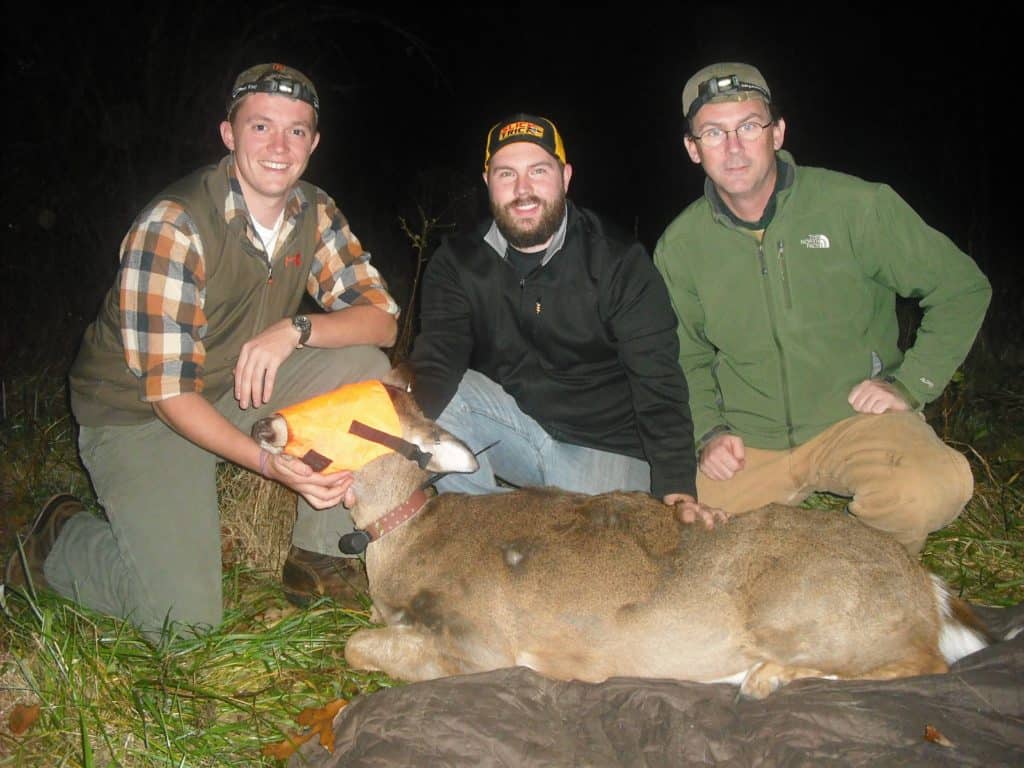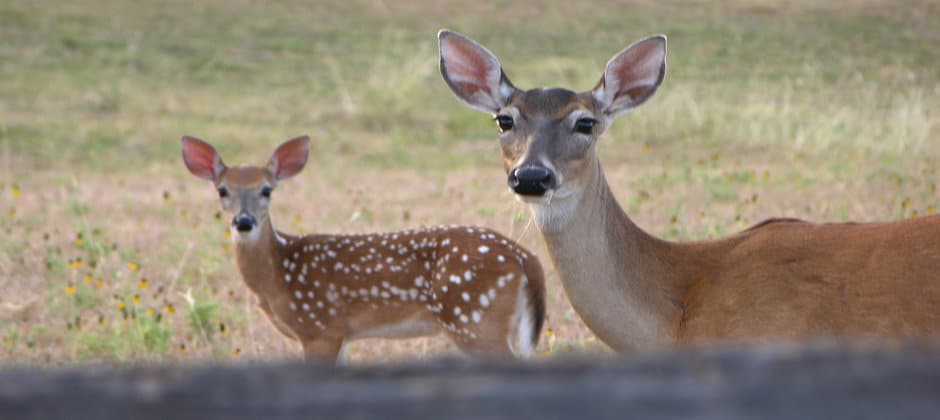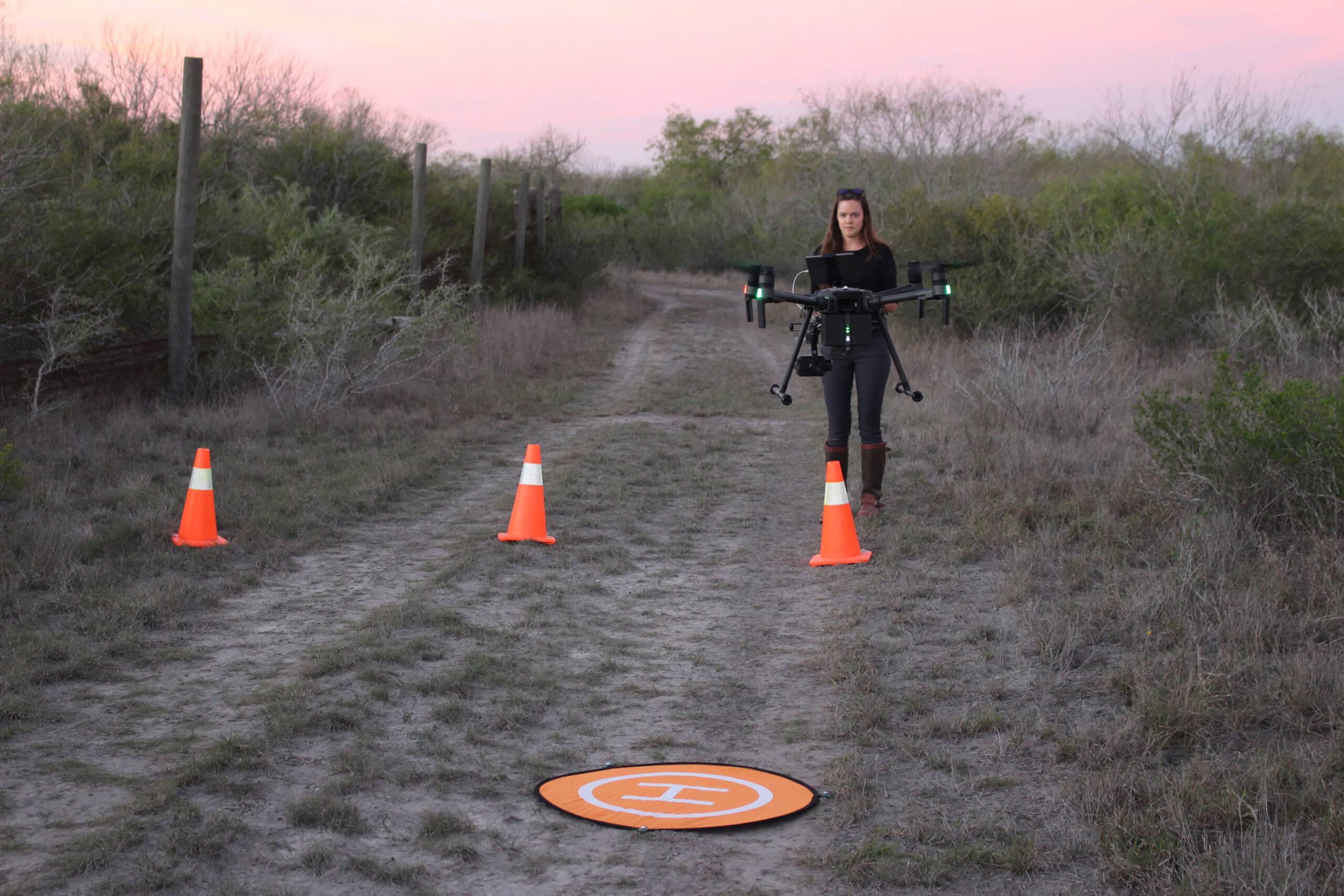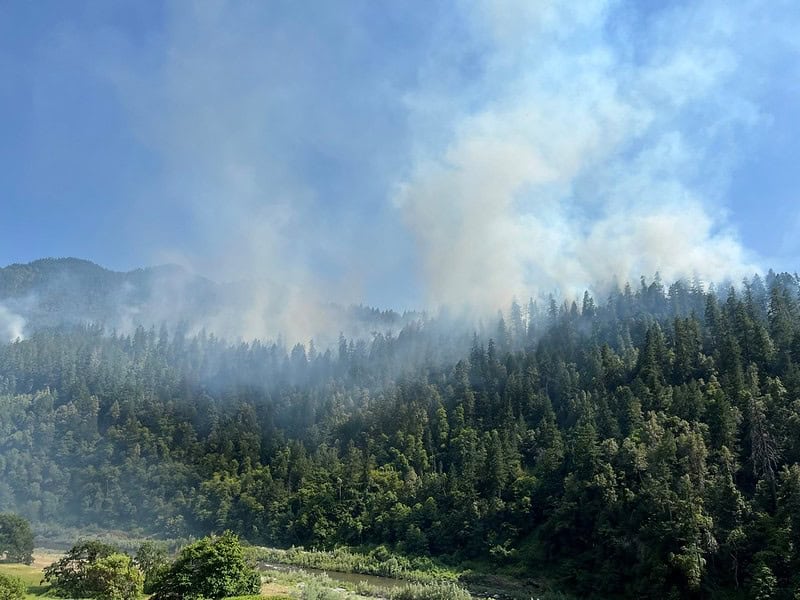Share this article
Lack of predators doesn’t change deer fawn survival rates
Deer fawn survival rates are similar in ecosystems without predators as in areas with coyotes, bobcats and black bears.
Researchers were working on a long-term white-tailed deer (Odocoileus virginianus) fawn survey, in an area of Delaware that lacked known resident predators. At the same time, there had been some buzz among the public about predators being “evil” and coyotes being “horrible,” said Jacob Bowman, a professor of wildlife ecology at the University of Delaware and one of the authors of a recent study looking at the Delaware deer. “We thought, hold on a second, let’s look in areas where we don’t have any predators to see if there are similar survival rates,” he said.
In the study published in Ecosphere, the team first had to make sure that there weren’t predators in the area.
“We wanted to go beyond just the general knowledge of biologists around and firmly establish that we didn’t have an abundance of predators in the area,” said Justin Dion, an assistant wildlife biologist with the Oregon Department of Fish and Wildlife and lead author of the study.
They set out bait to attract potential predators to trail cameras and only came up with one coyote (Canis latrans) photo and some red foxes (Vulpes vulpes), the latter of which do not typically prey on deer fawns.
Then, Dion and other field technicians captured fawns by opportunistic capture, or going out and looking for fawns; and by using vaginal implant transmitters (VITs). The latter devices are released when mothers give birth, triggering a signal sent to the doe’s collar that is then picked up by satellite.
The team collected 55 fawns opportunistically and 54 fawns using VITs. Incidentally, they found that VITs were much more accurate, since they could capture fawns shortly after birth. Some past studies, the team said, only used opportunistic capture or have used a combination of the two methods, which may have influenced their reported survival rates.

Dion, Haus and Bowman (left to right) with a doe.
Image Credit: Courtesy Jacob Haus
After reviewing their data, the researchers determined that fawn survival occurred at the same rate in predator-free ecosystems as in ecosystems with predators such as in Pennsylvania, Minnesota and Missouri. “One thing we figured out is there’s no shortage of ways that fawns figure out ways to die, even in the absence of predators,” Dion said.
The team sent the dead fawns to a diagnostic lab for necropsies to determine their causes of death. They found that upwards of 67% of the deer died from emaciation. But Dion said this wasn’t due to them being abandoned by their mothers, since they still had milk in their stomachs and GPS collars showed them staying put around their fawns.
Aside from deer that died from emaciation, young deer experienced all kinds of natural mortality such as pneumonia, birth defects and even tick borne diseases. In fact, six of 40 fawn carcasses examined showed signs of the lone star tick parasite, a condition previously believed more prevalent in the South.
Necropsy reports showed up jaundice and other symptoms suggestive of necrosis of the liver, said co-author Jacob Haus, an assistant professor at Bemidji State University, “Eventually, we found this very odd blood parasite transmitted by lone star ticks.
The main predictors of survival for the fawns were age of the doe, rainfall and birth weight, Bowman said. Older does are more experienced and occupy the best habitat patches. As a result, management to maintain deer populations, he suggests, may mean hunters shooting younger does.
Since the research, Delaware has had an influx of coyotes. The team said the next step is waiting until the coyotes become established and repeating the study in about 15 years.
But for now, the team said the research dispels the myth that predators are the only thing that can drive down deer populations. They demonstrated that predators may not be the ultimate cause of mortality, while they are often documented as the proximate cause.
We demonstrated that predator may not be the ultimate cause of mortality while they are often documented at the proximate cause of mortality. “We’re still having a predator discussion 70, 80 years after Aldo Leopold said the same thing. We need these predators,” Bowman said.
Header Image: Deer fawns in predator-free ecosystems survive at the same rate as those in ecosystems with predators. Credit: Alex O’Neal








